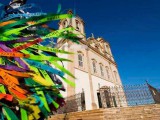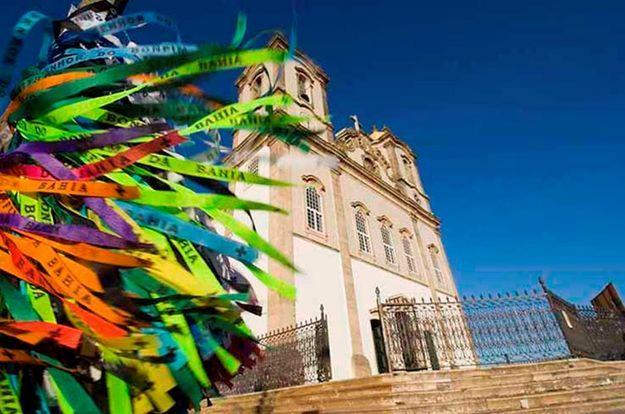Este post também está disponível em:
Português
English

The original Ribbons of Senhor do Bonfim were created in 1809 and disappeared in the early 1950s.
Known as the Bonfim measure, its name was due to the fact that it measured exactly 47 centimeters long, the length of the right arm of the statue of Jesus Christ, Senhor do Bonfim, placed on the main altar of Bahia’s most famous church. The image was sculpted in Setúbal, Portugal, in the 18th century.
The “measure” was made of silk, with the design and name of the saint embroidered by hand and finished with gold or silver paint.
It was worn around the neck like a necklace, on which medals and saints were hung, functioning as a bargaining chip: when paying a promise, the faithful carried a photo or a small wax sculpture representing the part of the body healed with the help of the saint (ex-voto). As a souvenir, they would buy one of these ribbons, symbolizing the church itself.
Video about the history of the Senhor do Bonfim ribbons


História das Fitinhas do Senhor do Bonfim

Curiosidades das Fitinhas do Senhor do Bonfim00:50

História das Fitas do Senhor do Bonfim
It is not known when the transition to the current wrist ribbon took place, but it is a fact that in the mid-1960s the new ribbon was already being sold on the streets of Salvador, when it was adopted by Bahian hippies as part of their clothing.
Some attribute the creation of the tape to Manuel Antônio da Silva Serva.
Colorful Ribbons
The colors of the ribbons.
Sold in various colors, the Senhor do Bonfim ribbon has a side that few people know about: each color symbolizes an Orisha.
- Dark green for Oxossi
- Light blue for Iemanjá
- Yellow for Oxum
Whatever the color, the ribbon has a symbolic, aesthetic and spiritual representation typical of Bahia’s African roots.
The three requests
In popular tradition, the Senhor do Bonfim ribbon is wrapped around the wrist and secured with three knots.
Each knot is preceded by a request, made mentally, which must be kept secret until the ribbon breaks due to natural wear and tear.
Bahia.ws is the largest travel and tourism guide for Bahia and Salvador.



















